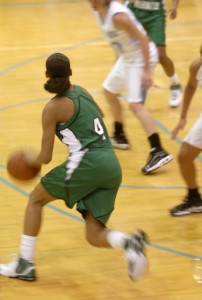Brian Schiff’s Blog
Injury Prevention, Sports Rehab & Performance Training Expert
I am currently working to attain my transitional doctorate in physical therapy (tDPT) at Northeastern University. As I continue to work full time as a clinician, it has been really cool to apply the learning with my current caseload. At this time, I am in a motor control class that is both fascinating and challenging. In week three, we examined pain and the impact it has on neuroplasticity (the brain’s ability to adapt or change).

In the sports medicine realm, I generally think many practitioners solely focus on the musculoskeletal system or physical impairment. As such, interventions are developed around tissue constraints, ROM deficits, weakness, etc. Too often, we look past the power and impact of the brain and how it plays a vital role in healing and return to play. For some patients, there is a maladaptive response to injury/surgery and a hypersensitivity of the central nervous system or central sensitization that occurs. Pelletier (2015) notes that structural and functional changes can occur. (1)
Two critical concepts to consider here are:
- Sensory amplification – sensory and motor representations change resulting in perceptual changes in body image, motor control changes, and even a persistence or amplification of pain
- Experience dependent plasticity – patient’s response to pain is related to prior experience and may experience maladatpive imprinting where the pain outlasts the physical insult
Kleim (2008) gives a great lesson on experience dependent plasticity and states that learning is essential for the brain to adapt to damage self taught behavioral changes can be maladaptive or positive and specific forms of neural plasticity and associated behavioral changes are dependent on specific kinds of experience (2). While one would assume that chronic pain is rare in athletes, I would counter and say it is probably just overlooked as we tend to expect athletes to “push through the pain” because of the driven culture we live in. Coaches, parents and even teammates can affect the mindset around injury and recovery.
Unfortunately, I see far too many patients following ACL reconstruction in my sports medicine practice. In any given month, I am rehabbing between 10 and 15 patients who have lost their season to this injury. Most of the time it is a non-contact mechanism of injury, often involving additional trauma to the collateral ligaments, menisci and/or cartilage within the joint.
Throughout my career, I have rehabbed several hundred athletes with ACL tears. It has always been an area of interest and passion for me as well as prevention. Blending my background in performance training with rehab, I have fostered through much trial and adjustment what seems to be a very effective approach to rehab and return to sport. Rehabbing higher level athletes is much like working on a high performance sports cars.
If you own a high performance vehicle, you would prefer to have it serviced at a dealership where the mechanics are experienced working on similar cars, yes? I feel the same care and application is relevant with ACL rehab. PT that is too aggressive or too conservative can impede progress and negatively impact peak performance.
I rehab far too many athletes under the age of 18 with ACL tears. In many cases, I am rehabbing some who have suffered multiple ACL ruptures before they graduate from high school. The burning question is why do so many clients suffer a graft failure or contralateral injury so so often?
Is it related to genetics? Is sports specialization to blame? Perhaps fatigue and limited recovery is a problem. I think the answer is multifactorial, but to be perfectly honest we as a profession have yet to truly arrive at a consensus as to when the “right time” to return to play is. Opinions vary widely based on the athlete, sport, native movement patterns, graft choice, additional injuries (ligament, cartilage or soft tissue) and the provider.
As a clinician dedicated to both prevention and the best rehab, I am always re-evlauating my own algorithm and rehab techniques, while looking for scientific rationale to direct my exercise selection and decision making processes. A recent paper by Webster and Feller in the November 2016 edition of AJSM looked at subsequent ACL injuries in subjects who underwent their primary ACLR under the age of 20 utilizing a hamstring autograft reconstruction procedure.
As a sports medicine professional and physical therapist working with lots of athletes after ACL surgery, I am always looking for ways to improve post-op rehab and prevent a subsequent ACL injury. While we have lots of research looking at neuromuscular, genetic, sex and morphologic risk factors, we have not been able to make significant progress in injury reduction. So many athletes suffer the dreaded “pop” making a simple athletic maneuver they have done a thousand times before.
Based on nearly 19 years of experience training and rehabbing athletes from youth to professionals, I see strong links to a genetic predisposition (family history and prior injury) as well as concerns over neural fatigue. We already know the age of injury is a significant as research indicates those tearing at a younger age (around 20-21 y/o) are more likely to suffer a second injury. But what we know less about is the impact of ankle biomechanics (namely limited dorsiflexion) and how proximal weakness in the hip affects injury risk.
The latter topic was the focus of a study just published in the current edition of the American Journal of Sports Medicine. In this prospective study, researchers sought to determine if baseline hip strength can predict future non-contact ACL tears in athletes.

Every month there are new papers on ACL surgery and rehab appearing in the literature. I do my best to stay up on them as this is one area of my practice I am extremely passionate about. I am driven to understand as much as I can about both prevention and rehab, but find myself increasingly focused on preventing secondary ACL tears in my patients.
I feel poor movement patterns, muscle imbalances and inefficient neuromuscular control are major risk factors for athletes suffering a primary ACL tear. We also know being female markedly increases injury risk. Research also tells us that males are more likely to suffer a re-tear of the same side, whereas females are more likely to suffer a contralateral injury.
A study just published in the July issue of the American Journal of Sports Medicine looked at the incidence of second ACL injuries 2 years after a primary ACL reconstruction and return to sport. In a nutshell, the findings were:
- 24 months after ACLR and return to sport, patients are at greater risk (6x) to suffer a subsequent ACL tear compared to young athletes w/o a history of ACL injury
- Female athletes in the ACLR group are 5x more likely to suffer a second injury
- The contralateral limb of female athletes is at greatest risk
Click here to read the full abstract
This information is not surprising as I have seen it firsthand in 17 years as a physical therapist. What we do not have much information about is how do the younger patients (e.g 15 and under) really recover from this injury. When should they be cleared? I worked with a young female soccer athlete who tore her ACL and medial meniscus at age 13. She worked diligently with me in rehab 3x/week for about 6 months and then continued training with me at least 2x/week until she was about 1 year out from surgery.




